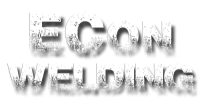Installation Instructions
 Installation Instructions for Custom Table Legs
Installation Instructions for Custom Table Legs
GLASS TOPS
If you inform us that the base is to be used with a glass top, we typically make the base a little different. We don’t put mounting pads or plates on the top of the base, and the top is finished off smooth so it has an attractive appearance through the glass. We also include rubber bumpers that stick to the top of the metal base for the glass to rest on so there is no metal-on-glass contact, which can cause rattling, scratches, and possibly crack the glass.
We always recommend using a free-standing base with glass tops, such as any of our Trestle Bases or Table Frames or table legs such as the T-Shaped or Triangular Style metal table legs. Some table manufacturers do use epoxy to glue standard table legs to glass tops, but we do not recommend this approach, as if this is done improperly and the adhesive fails, the entire table will collapse.
The installation of glass tables is as simple as placing the rubber bumpers on the base in the desired locations and placing the glass on top of the base. If you do not wish to use the rubber bumpers, we recommend using silicone to lightly glue the top to the metal base. Glass tables should never be assembled upside down using an adhesive to mount the top to the base.
Contact us if you have any more questions.


